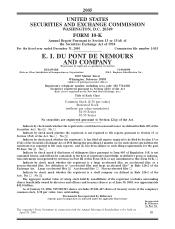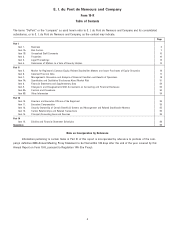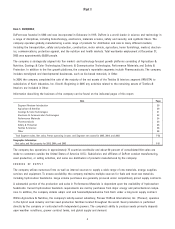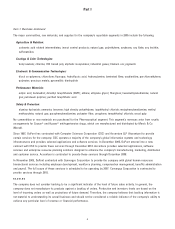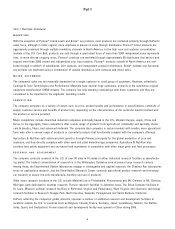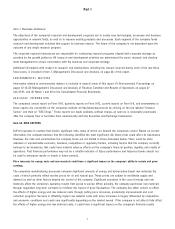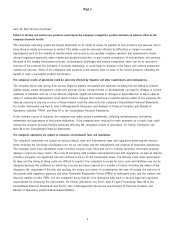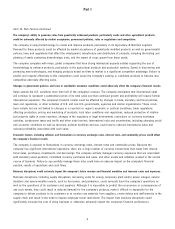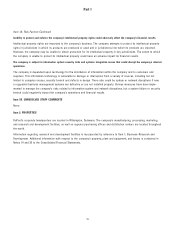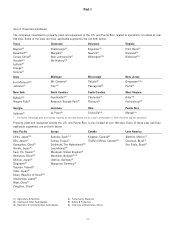DuPont 2005 Annual Report Download - page 5
Download and view the complete annual report
Please find page 5 of the 2005 DuPont annual report below. You can navigate through the pages in the report by either clicking on the pages listed below, or by using the keyword search tool below to find specific information within the annual report.Part I
Item 1. Business–Continued
PATENTS AND TRADEMARKS
The company believes that its patent and trademark estate provides it with an important competitive advantage. It has
established a global network of attorneys, as well as branding, advertising, and licensing professionals, to procure, maintain,
protect, enhance, and gain value from this estate.
The company owns and is licensed under various patents, which expire from time to time, covering many products, processes
and product uses. These patents protect many aspects of the company’s significant research programs and the goods and
services it sells. The actual protection afforded by these patents varies from country to country and depends upon the scope
of coverage of each individual patent as well as the availability of legal remedies in each country. The company owns
approximately 21,000 worldwide patents and approximately 15,000 worldwide patent applications. In 2005, the company was
granted almost 400 U.S. patents and about 1,500 international patents. The company’s rights under its patents and licenses, as
well as the products made and sold under them, are important to the company as a whole, and to varying degrees, important
to each reportable segment.
For a discussion of the importance of patents to Pharmaceuticals, see the segment discussion on page 35 of this report.
The environment in which Pioneer and the rest of the companies within the seed industry compete is increasingly affected by
new patents, patent positions, patent lawsuits and the status of various intellectual property rights. Ownership of and access
to intellectual property rights, particularly those relating to biotechnology and germplasm, are important to Pioneer and its
competitors. No single patent owned by Pioneer or its competitors is essential to Pioneer’s ability to compete. However,
Pioneer will continue to address freedom to operate issues by enforcing its own intellectual property rights, challenging claims
made by others and, where appropriate, obtaining licenses to important technologies on commercially reasonable terms.
The company has approximately 2,000 unique trademarks for its products and services and approximately 19,000 worldwide
registrations and applications for these trademarks. Ownership rights in trademarks do not expire if the trademarks are
continued in use and properly protected. The company has many trademarks that have significant recognition at the consumer
retail level and/or business to business level. Significant trademarks at the consumer retail level include the DuPont Oval and
DuPont (the ‘‘DuPont Brand Trademarks’’); Pioneer brand seeds; Teflon fluoropolymers, films, fabric protectors, fibers, and
dispersions; Corian surfaces; Kevlar high strength material; and Tyvek protective material.
As part of the sale of INVISTA to Koch in 2004, DuPont transferred certain patents and patent applications as well as certain
trademarks and their related registrations and applications. In addition to this transfer, Koch and DuPont have entered into
agreements regarding intellectual property rights, including patent and trademark licenses.
SEASONALITY
Sales of the company’s products in Agriculture & Nutrition are affected by seasonal patterns. Agriculture & Nutrition’s
performance is strongest in the first half of the year. The segment generally operates at a loss during the third and fourth
quarters of the year. As a result of the seasonal nature of its seed business, Agriculture and Nutrition’s inventory is at its
highest level at the end of the calendar year and is sold down in the first and second quarters. Trade receivables in
Agriculture & Nutrition are at a low point at year-end and increase through the selling season to peak at the end of the
second quarter.
In general, businesses in the remaining segments are not significantly affected by seasonal factors.
5

